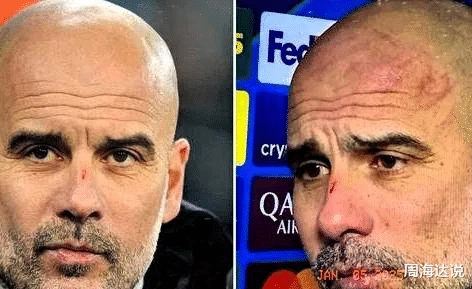Manchester City's Revival: A Change in Tactics by Pep Guardiola
Recently, Manchester City's two consecutive victories have presented a new image of the team. Pep Guardiola has finally let go of his long-held possession-based philosophy and allowed Erling Haaland to freely roam the pitch. This change has brought back the feeling of victory for Manchester City, and the story behind it is more complex than it appears on the surface.
After a dark period, Manchester City has finally turned the corner. In their last two matches, they have shown a completely different face, no longer fixated on possession rates but focusing on the efficiency and quality of their attacks.
Guardiola's change was foreshadowed earlier. In the match against Leicester City, Manchester City's possession rate was surprisingly low; this team, known for its possession game, actually relinquished the ball.
The immediate effect of this change was evident, with the team displaying greater lethality in the game, especially Haaland, who no longer had to wait for opportunities confined within the penalty area.
Savigno's role has also changed significantly. The Brazilian winger began to frequently provide assists for Haaland, and their cooperation became increasingly默契。

This tactical shift made Manchester City's offense more direct and efficient; the team no longer needed endless passes to create opportunities.
For Guardiola, this change may have been a difficult decision, but he ultimately chose to adapt to reality.
This transformation also confused opponents who were prepared to face Manchester City's possession football, only to find that their opponent had completely changed its approach.
Under the new tactical system, Haaland gained more freedom; he was no longer just a finisher in the penalty area but could fully utilize his speed advantage.
This change made Haaland look more like his Borussia Dortmund days when he relied on speed and power as a forward.
In the match against West Ham, Haaland's two goals showcased his different characteristics: one through speed on the counterattack, the other through a header.

This diversified scoring method indicates that Haaland is adapting to the new tactical requirements and is no longer limited to a single way of scoring.
Savigno's crosses created more opportunities for Haaland, and the默契 between the two players is gradually forming.
Haaland can now participate more in the team's overall coordination rather than just waiting for opportunities in the penalty area.
This change also made the opponent's defense more challenging as they could not predict where Haaland would appear.
This tactical shift allowed Haaland's features to be better utilized, and he could finally display his full potential.
Savigno demonstrated remarkable assist capabilities in recent games, similar to his performance in La Liga.

In previous games, Savigno seemed to be searching for his position, but now he has finally found the most suitable playing style for himself.
He began to frequently send high-quality crosses from the flank, which often found Haaland in the penalty area.
Savigno's change also made Manchester City's attack more diverse, forcing opponents to allocate more energy to defend the flanks.
The increasing默契 between him and Haaland made Manchester City's attack even sharper.
In the last two games, Savigno has already provided three assists, indicating that he is gradually adapting to the new tactical requirements.
His crosses are of very high quality, giving Haaland more opportunities in the penalty area.

This style of play also makes Savigno look more like a traditional winger rather than the previous type of cutting-in winger.
Guardiola's change shows that he is keeping up with the times and no longer rigidly adheres to the concept of possession football.
This change may influence the entire football world's perception of possession football, especially since even Guardiola has started to change.
The team's current style is more pragmatic; they no longer pursue flashy combinations but focus on efficiency.
This change also makes Manchester City more difficult to defend against as opponents cannot predict how they will attack.
Guardiola's transformation indicates that he is adapting to the development trend of modern football.
This change may become a regular tactic for Manchester City in the future, not just a temporary solution.
The team's overall performance indicates that this change is correct; they have finally found the feeling of victory.
This tactical shift also demonstrates Guardiola's strong adaptability; he can adjust his philosophy based on actual circumstances.